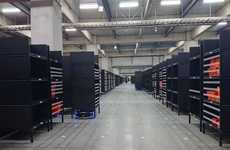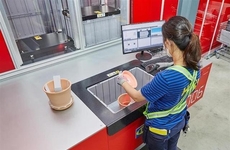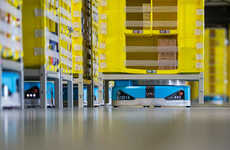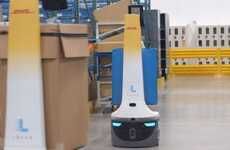
Uniqlo's Robotic Warehouse is a Future Template for the Clothing Company
Justin Lam — October 17, 2018 — Tech
References: digitaltrends
Robots are becoming more commonplace in warehouse settings but Uniqlo recently released a video showing off its humanless warehouse. The robotic systems used by Uniqlo are on full display in this video and have allowed the clothing brand to remove 90 percent of its human employees at this location. The video also illustrates the ability of the humanless warehouse to work nonstop around the clock, with the exception of occasional maintenance work.
This specific warehouse was built in partnership with logistics company Daifuku. This warehouse is clearly the vision for Uniqlo's future as its parent company, Fast Retailing, plans to invest 100 billion yen to convert all warehouses in Japan and its 11 other locations around the world to robotic automation.
Image Credit: Uniqlo
This specific warehouse was built in partnership with logistics company Daifuku. This warehouse is clearly the vision for Uniqlo's future as its parent company, Fast Retailing, plans to invest 100 billion yen to convert all warehouses in Japan and its 11 other locations around the world to robotic automation.
Image Credit: Uniqlo
Trend Themes
1. Robotic Warehouses - The trend of utilizing robotic technology in warehouse settings to increase efficiency and decrease labor costs.
2. Humanless Warehouses - More companies will be exploring and investing in humanless warehouses for logistics and supply chain management.
3. Automated Warehouses - The future of warehouses will see an increased adoption of automation technology to streamline processes and reduce errors.
Industry Implications
1. Logistics - Logistics industry can capitalize on the use of robotic technology and automation for warehouses and supply chain management.
2. Retail - Retail industry can find value in the investment of automated warehouses to reduce labor costs and increase efficiency.
3. Manufacturing - Manufacturing industry can use robotic technology for increased productivity and cost savings in supply chain operations.
2.2
Score
Popularity
Activity
Freshness















